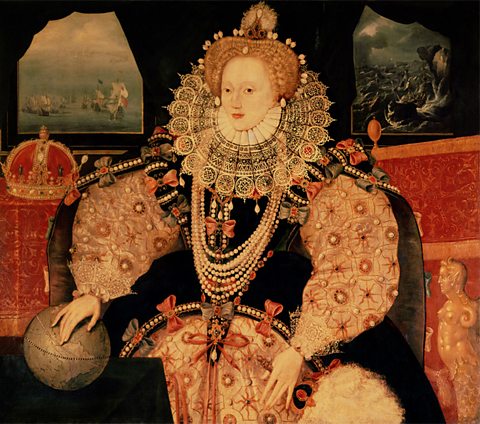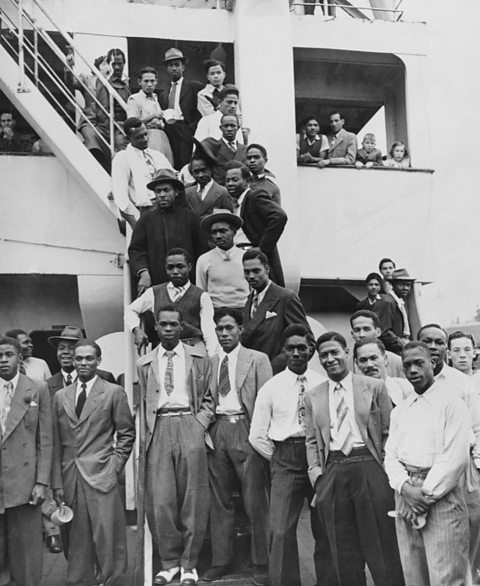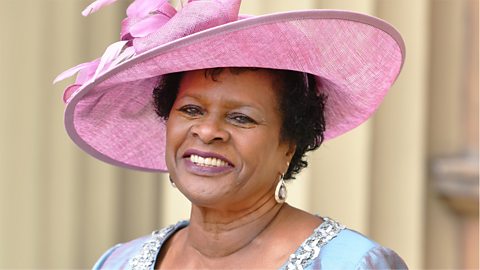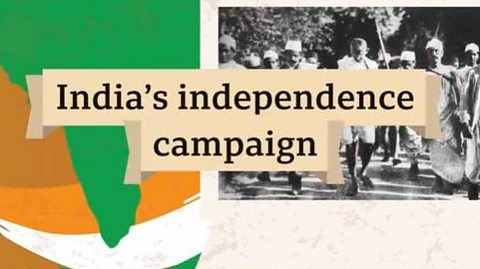Key points
- The first European country to claim control over Caribbean territory was Spain in the 1400s.
- By the 1650s England had taken control of several islands in the Caribbean, including Jamaica and Barbados.
- 2.3 million Africans were enslaved and transported to British colonies in the Caribbean.
- From the 1960s onwards, former British colonies in the Caribbean began to gain independence.
By 1900, which islands and territories in the Caribbean were under British control?
By 1900 the British controlled many islands and territories in the Caribbean, including Jamaica, Barbados and Grenada.
The Caribbean is sometimes referred to as the West Indies because Christopher Columbus claimed to have found a new route to Asia, which was called the Indies at the time. Although we now know that Columbus had not sailed to Asia, but to the Americas.
The development of the British Caribbean
The first European country to declare control over part of the Caribbean was Spain, with the arrival of Christopher ColumbusAn Italian explorer who was one of the first Europeans to reach the Americas. He was funded by the Spanish royal family, and initially declared control of the Caribbean for the Spanish. His voyages led to European countries colonising much of the Americas. in 1492. Columbus led the beginning of Spanish control of many parts the Americas, using brutal violence to do so. Their exploitation of indigenous peopleThe people who originate in a particular area, rather than those who migrated there. Americans led Spain to control 80 per cent of the world’s silver. From 1497 onwards, England wanted to develop colonies to increase its wealth, as Spain had done.
How did Henry VII try to expand England’s territory overseas?
Henry VII commissioned John Cabot to find a new route to Asia. Instead, Cabot reached what is now Canada in 1497. By 1502, Henry VII had commissioned a voyage with the Portuguese to explore the Americas.

In 1562, with greater knowledge of the resources that existed in the Americas, John Hawkins was given permission by Queen Elizabeth I to begin English involvement in the transatlantic slave trade. This led to a growing desire to set up colonyA country, state or territory ruled over by another country, state or territory. in the Americas, particularly in the Caribbean, where English merchantA person involved in buying and selling items, usually between different countries. In the British Empire, this was done using a lot of force and violence when local people did not cooperate with the merchants. could settle and establish plantationsEstates and farms where enslaved people were forced to produce crops such as sugar, coffee or tobacco..
From the 1600s, the English were powerful enough to challenge the French and Spanish for control of several islands, such as St Kitts and Jamaica. From 1623 the English began to control enough islands to mark the beginning of what later became known as the British Caribbean. In 1623, St Kitts came under English control. This was followed by Barbados, Montserrat and Antigua in 1627, then Nevis in 1628. In 1655, William Penn Sr.An English admiral who led the British navy when they captured Jamaica. seized Jamaica from the Spanish.
| Island | Year it came under English control |
|---|---|
| St Kitts | 1623 |
| Barbados | 1627 |
| Montserrat | 1627 |
| Antigua | 1627 |
| Jamaica | 1655 |

France, Spain and the Netherlands also maintained control of several islands. They initially hoped to find gold and silver in the Caribbean islands, like the Spanish had on the Latin American mainland. They found very little of either, but they soon discovered that the land and weather was good for growing crops such as sugar and coffee.
By 1750, sugar had become the most valuable item traded by Europeans, making the Caribbean islands even more valuable to European powers. To make a lot of money from sugar, European countries began to forcibly transport enslaved Africans to the Caribbean and to colonies across the Americas.
Out of the estimated 12 million enslaved people transported across the Atlantic Ocean, 5 million were taken to the Caribbean and 2.3 million of them were taken to British colonies in the Caribbean.
What was life like on sugar plantations in the Caribbean?

Many enslaved people who worked on sugar plantations died early of exhaustion, injury or disease. The sugar crop needed a lot of labour and taking too long to harvest the cane could spoil a whole crop. The ground on the sugar plantation had to be dug over, and holes to for planting the cane had to be made. Once planted, the cane had to be fertilised with animal manure.
The working day was at least 18 hours long, in scorching conditions. At harvest time, sugar cane was cut and loaded onto carts. This was back-breaking work and involved twenty-four-hour labour. The harvested cane was taken to the sugar mill, where it was crushed and boiled to extract the juices. Large rollers were used to do this. It was dangerous work. Many people had to have their arms amputated following accidents using the machinery.
Early resistance to British control
Resistance to British control began almost immediately, particularly in Jamaica. Enslaved people who successfully ran away from British plantations often found indigenous communities and joined them. These new groups of people became known as the Maroons.
The First Maroon War
In 1728, the First Maroon War began. It was fought between the Maroons of Jamaica and the British. The British failed to defeat the Maroons and had to agree to a peace treaty in 1739. Under this treaty the British agreed not to attack the Maroons, on the condition that Maroons stop accepting enslaved people who had run away.
How did the Maroons of Jamaica become strong enough to fight a war in 1728?
When England first took control of Jamaica, there was an increase in the number of British settlers to as many as 12,000. However, by the late 1660s there were little more than 3,000. This meant that the British only had enough slave owners to control limited amounts of the island. As a result, the Maroon community was able to keep control of much of the centre of the island. There was enough land for several different communities. Some communities came from smaller successful slave rebellions, like the 200 enslaved people who revolted in St Anne’s Parish to form the Leeward Maroons, who led the First Maroon War.

The Second Maroon War
In 1795 there was another, shorter, Maroon War that lasted until 1796. This ended in the destruction of several plantations by the Maroons and the deportationRemoving a person or group of people from a place or country. of 581 Trelawny MaroonsMaroons from Trelawny Town, the largest of five Maroon towns in Jamaica in the 1700s. to Nova Scotia, Canada. Several other Maroon communities remained in Jamaica following both wars.
Following the two Maroon Wars, the British signed peace treaties with the maroons, enabling them to live freely until the abolition of slavery.
The transatlantic slave trade was abolished in 1833. 700,000 enslaved people in the British Caribbean were immediately emancipated, although many continued to work on plantations until 1838 under the apprenticeship schemeAfter the transatlantic slave trade was abolished, slave owners argued that they needed enslaved people to continue to work for them for at least four more years for very low wages so that they would not lose as much money. The conditions faced by apprentices were not very different to the conditions faced by enslaved people.. In order to continue benefitting from the sugar plantations in the Caribbean, the British used a system of indentured labourers to bring people from other British colonies to work on them. Many of these indentured labourers came from British India.
Did the lives of newly emancipated people improve under the apprenticeship scheme?
When enslaved people in the Caribbean heard that the transatlantic slave trade was to be abolished, they were excited about their future as free people. When they heard about the apprenticeship scheme, however, they realised that they would have to wait longer for real change. The apprenticeship scheme forced formerly-enslaved people to continue working on plantations in exchange for food, shelter and some wages if they worked overtime. Apprentices were required to work for an extra four to six years after abolition, depending on their role, and the scheme was finally abolished in 1838.
The conditions on the plantations largely remained the same, with brutal working conditions and physical punishments a common feature of daily life. In some cases the conditions were worse, for example, for pregnant women. When they were enslaved they could expect to be exempt from physical labour, as their owner would own their children and so wanted them to be born healthy. This was not the case under the apprenticeship scheme, under which many pregnant women were expected to continue doing physical labour.
Jamaican independence

Thousands of men and women across the British Caribbean had fought for Britain in World War Two. Many returned home expecting better living conditions and total independence from the British Empire.
In 1944, a new constitutionA set of laws by which a country is governed. was made for Jamaica, which gave them the beginning of self-governmentWhen the government of a country is run by its own people. with the democratically elected House of Representatives.
By 1953, Jamaicans could elect government ministers, and by 1959 they had full self-government.

The Windrush generation

From 1948, thousands travelled to Britain as part of the Windrush generationThe name given to the people who migrated to Britain from 1948-1971 from the Caribbean. It began with the arrival of the ship Empire Windrush at Tilbury Docks in England in June 1948. . They left Jamaica because working conditions were not improving and there were not enough jobs for everyone.
The British Nationality Act 1948 meant that as CommonwealthThe Commonwealth was set up in 1926 between Britain and all partly independent countries in the empire, which were also known as dominion states. Eventually other territories within the empire became part of the Commonwealth. citizens, Jamaicans had the same right to live and work in Britain as British citizens. As Britain called on Commonwealth citizens to help re-build Britain after the war, many Jamaicans were promised better pay, job opportunities and housing in Britain.
However, when people arrived in Britain, many were forced into low-paid jobs and poor housing, and suffered racist attacks.

Impact of Jamaican independence
Jamaican independence had a domino effectThe effect of one event causing a whole chain of further events, like a row of dominoes falling down and knocking each other over. in the Caribbean.

Some Caribbean islands still have the British monarch as their head of stateThe chief official of a country. It can be a king, queen or the leader of the government., but others became republics, like Trinidad and Tobago in 1976.
On 31 November 2021, Barbados declared itself a republic, removing Queen Elizabeth II as its head of state. Dame Sandra Mason, Barbados’ governor-general, was sworn in as president and head of state.
There are still some parts of the Caribbean that are British overseas territories:
- Anguilla
- British Virgin Islands
- Montserrat
- Turks and Caicos
- Cayman Islands

When did other colonies gain their independence from the British Empire?
The first colony to gain their independence from the British Empire was the United States of America in 1776. Canada gained dominion status in 1867, which meant that although it remained a part of the British Empire, it governed itself. Australia, New Zealand and South Africa gained dominion status in 1901, 1907 and 1910 respectively.
India and Pakistan gained independence from the British Empire in 1947, and Ghana was one of the first African countries to gain independence from the British Empire in 1957. Comparatively, Caribbean countries gained their independence much later than other parts of the empire.
Test your knowledge
Play the History Detectives game! gamePlay the History Detectives game!
Analyse and evaluate evidence to uncover some of history’s burning questions in this game.

More on The end of Empire
Find out more by working through a topic
- count1 of 3

- count2 of 3
